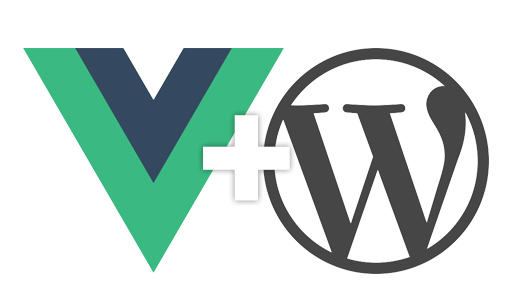A true WordPress theme with the guts ripped out and replaced with Vue. Based on EvanAgee's billiant work, which was originally based on the BlankSlate WP starter theme.
- VueRouter integrated
- Vuex integrated (with sample WordPress-centric modules)
- Axios for API requests
- Bootstrap Vue for easy Bootstrap 4 Components
- Font Awesome 5 for vector & social icons
- Follows the development guidelines/structure set forth by Vuejs
- Bare essentials needed for a functional WordPress theme
- All requests are redirected back to the index.php so your Vue routing is respected.
- SCSS support
- Clone the repo inside of your
wp-content/themes/directory - Navigate to the theme directory and run
npm installnpm run watchfor developmentnpm run productionwhen you're ready to deploy the theme.
There are some useful plugins that are required for this theme. In order to install them, use WP-cli or WPackagist:
wp plugin install wp-api-menus acf-to-rest-api wp-rest-api-frontpage wp-pwa-yoast-seo wordpress-seo --activate
Or...
{
"repositories":[
{
"type":"composer",
"url":"https://wpackagist.org"
}
],
"require": {
"wpackagist-plugin/wp-api-menus":"*",
"wpackagist-plugin/acf-to-rest-api":"*",
"wpackagist-plugin/wp-rest-api-frontpage":"*",
"wpackagist-plugin/wp-pwa-yoast-seo":"*",
"wpackagist-plugin/wordpress-seo":"*"
}
}
- Open up
src/app.jsthis is the main JS file for the app and will give you a glimpse into what's going on behind the scenes. - Next open up
src/App.vuethis is the primary app component, a page wrapper of sorts. It contains the header/footer and the<router-view>component which is what loads in all of the other screens as you navigate around the app. Note that by defaultsrc/components/Home.vueis loaded into therouter-viewinitially. - Next open up
src/routes/index.jsand notice how the routes are setup by default. Out of the box there is only one route, the/or home view. For more information on setting up routing within your app checkout Vue-Router.
The first thing you're probably going to want to do is start editing and components in src/components/views/.
All of the code you're going to edit is located in /src/. From there it's broken into a few logical directories.
/src/apifor API requests/assetsfor images mostly/componentsVue components/routervue-router directives/storevuex store and modules/stylesSCSS styles/vendor3rd party scripts and libraries
All scripts and styles in /src are compiled down to the /dist directory, which is what you will deploy. When you're ready to deploy don't deploy the src/ directory.
By default, this theme sets up three separate routes. One for the homepage, one for WordPress pages and one for WordPress posts. These routes can be found in /src/router/index.js
In order to separate pages from posts, you'll need to change the permalinks settings. By default, we've created a home page and a news page. Next, set these up as the static pages via:
- In the admin dashboard
- Go to
Settings > Readingoption - Select
A static page (select below)option forYour homepage displays. - Set
Homepage:asHome - Set
Posts:asNews - Press
Saves Changesbutton - Go to
Settings > Permalinks - Select the permalinks structure as
Custom Structurewith the entry/news/%postname%/ - Press the
Save Changesbutton
